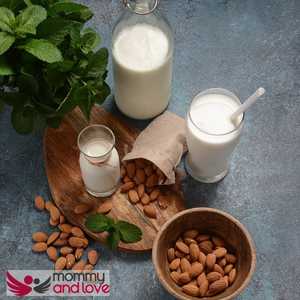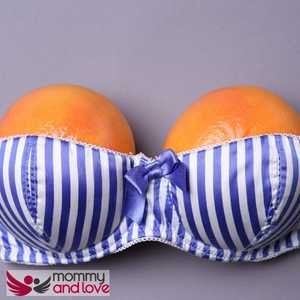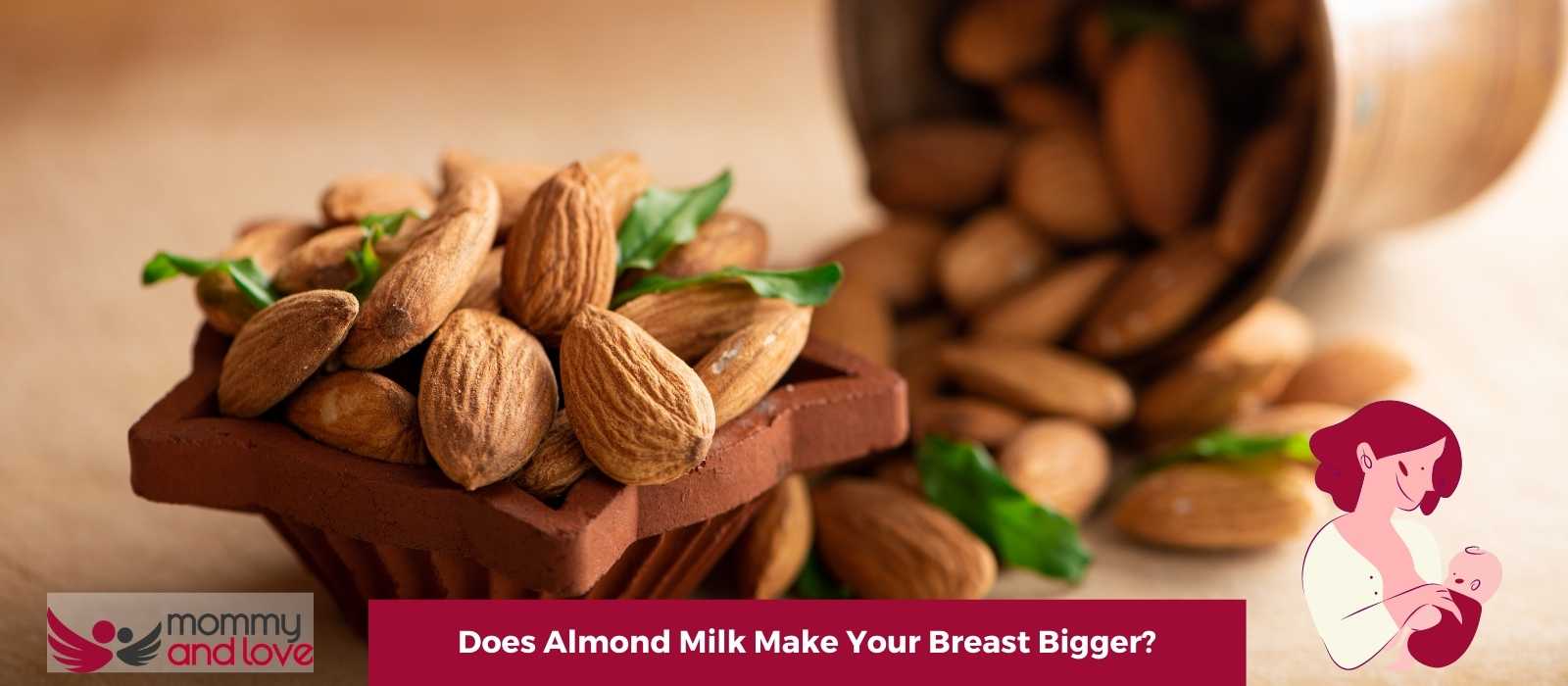Do you enjoy almond milk because you’re trying to be healthy? But did you ever wonder if ‘can almond milk make your breasts bigger?
Believe it or not, there is a lot of debate on whether or not almond milk can increase breast size. Some people swear by the stuff and say that they’ve seen a noticeable difference in their bustline after drinking almond milk regularly. Others claim that it doesn’t do anything at all.
So what’s the truth? Keep reading to find out!
So, does almond milk make your breast bigger? The answer is yes – somewhat. There are a few ways to increase breast size naturally, and many of them involve eating estrogen-rich foods or exercising.
What Are the Health Benefits of Drinking Almond Milk While Breastfeeding?

Almond milk is a great source of digestive enzymes, which help keep your digestion healthy.
Almond milk is also rich in both vitamin D and vitamin E. Almonds have many health benefits for both you and your baby.
It keeps your heart healthy. Almond milk is rich in omega fatty acids but has no cholesterol or saturated fat. It also contains fewer calories compared to whole milk and skim milk even though almonds are considered calorie-dense foods.
It also helps you achieve healthy bones. Calcium is found in this milk as well.
Some of these benefits include reducing the risk of infection, promoting healthy skin and hair, and providing antioxidant protection.
Vegans and people who avoid dairy products consume almond milk. It’s also a good alternative for those with intolerance to cow’s milk. Another alternative is rice milk.
So if you’re looking for a nutritious and delicious way to support your breastfeeding journey, almond milk is a great option! It is usually fortified to make it similar to genuine milk.
But before consuming almond milk, make sure you are aware of its side effects such as thyroid problems. Almonds are known to impede iodine absorption.
Can Almond Milk Make You Increase Your Breast Milk Supply?
There is anecdotal evidence that almond milk plays a role in increasing breast milk supply. Some lactation consultants report that mothers have increased production of breast milk after drinking almond milk.
Almond milk is a good source of linoleic acid, which is a type of fatty acid that is known to be lactogenic (stimulates breast milk production).
Additionally, almonds are lactogenic nuts, which means that they can also help to increase breast milk supply. If you’re looking for a delicious way to increase your milk supply, try fresh almond milk!
How Much Almond Milk Can Breastfeeding Mothers Drink?
Almond milk is a great alternative for mothers who are looking to reduce their dairy intake while breastfeeding. However, it’s important to limit your almond milk dosage to no more than 32 ounces per day.
Drinking too much almond milk can lead to an imbalance in your baby’s nutrient intake.
You can prepare almond milk at home. Homemade almond milk is made by adding water to almond butter and then straining the mixture to remove the solids. You can also buy commercial almond milk which is available in a wide selection of flavors.
Can Almond Milk Make Your Breasts Bigger?

It’s a common question asked by many women who are looking for a natural way to encourage breast development.
After all, phytoestrogens – which are found in abundance in almond milk – have been linked to breast growth even though not as effective as naturally produced estrogen.
So, can almond milk really help you achieve bigger breasts? Let’s take a closer look at the science behind phytoestrogens and breast growth to find out.
Phytoestrogens
Phytoestrogens are plant-based compounds that have estrogenic activity, meaning they contribute to the growth of breast tissues. This means that they can bind to estrogen receptors in the human body and mimic the effects of this hormone and your breasts begin to grow.
Generally, milk contributes to breast growth. And as to how much milk you need to drink before you end up with larger breasts depends entirely on your body and your diet.
Some studies have shown that phytoestrogens can promote breast growth in animals. However, it’s important to note that the levels of phytoestrogens used in these studies are much higher than what you would consume from drinking almond milk.
Interestingly, this milk is not as effective in increasing male breast size as it does in females.
So, can this milk make your breasts bigger? At this point, there is no scientific evidence to show that this milk can increase breast size in humans. However, some women may experience an increase in breast fullness or tenderness after consuming phytoestrogen-rich foods like almond milk.
Some women even consume almond butter because it helps make their breasts fill with fats thus they feel that their breasts grow.
Is It Bad to Drink Almond Milk Everyday?
Probably not. Drinking almond milk regularly may help reduce the risk of developing osteoporosis. But of course, you shouldn’t drink it if you have almond milk allergies or you have sensitivities to allergenic nuts.
Can You Use Almond Milk to Increase Your Breast Size?
There is no direct link between nut consumption and increased breast size. However, some nuts are high in essential fatty acids, which can help to plump up the skin. Almonds also contain a fat-soluble vitamin called E, which can help to improve circulation and promote cell growth.
So while there is no guarantee that almond milk will increase your breast size, it certainly can’t hurt! If you’re looking for nut butter that’s high in essential fatty acids, try cashew or macadamia butter. And if you want to up your intake of vitamin E, try adding some sunflower seeds to your diet.
A lot of women are looking for natural ways to make their breasts bigger. And one way that’s gaining popularity is using almond milk.
Almond milk is high in phytoestrogens, which are plant-based compound that binds to a cell’s estrogen receptor. These can mimic the effects of estrogen in the body and help to increase breast size. And breast growth is stimulated by the hormones estrogen and progesterone. These are the same hormones needed to produce milk and support bone health.
Fenugreek is another popular herb for increasing breast size. It’s often taken in capsule form, but you can also find it ground up and add it to almond milk. You can pair it with whole wheat bread for a healthy breakfast to enlarge breasts.
Taking almond milk with ground fenugreek seeds can make the breasts firm and perky.
How to Increase Breast Naturally
You can encourage breast enlargement through diet and exercise.
Diet
Eat a healthy diet. A healthy diet will not only help you maintain your weight, but it can also help reduce the risk of breast cancer. Breast tissue is made up of fat, which means that eating unhealthy foods or skipping meals could make your breasts smaller. You should follow a healthy diet rich in protein and healthy fats instead. You can still enjoy dairy products and whole grains.
You should also eat hormone-balancing foods. If you want to increase your breast size without surgery, then it’ll be important to include estrogen-rich foods such as soy milk or oat milk in your diet.
Choose organic fruits and vegetables whenever possible and opt for grass-fed meats and wild-caught fish to minimize any exposure to pesticides or hormones that may interfere with natural hormone production or balance that are used in enhancing breast size.
The following are some healthy examples of types of foods that will help increase estrogen:
- Soy milk and other plant milk products
- Flax seeds/flaxseed oil
- Fenugreek
- Chickpeas (see guide to eating chickpeas)
Exercise

While you can’t change the size of your breasts, you can make them appear bigger. Chest exercises that challenge your chest muscles will give you a more athletic appearance and a bigger bust.
Some exercises to add to your routine include pushups, wall pushups, bench presses, dumbbell flyes and incline presses. To get the desired results, it’s recommended that you exercise three times a week.
It’s also important to eat foods such as salmon and quinoa that help regulate hormones and boost estrogen production in your body. Doing this will make your breasts appear larger without any additional fat deposits on them.
How Do Estrogen Hormones Make the Breasts Bigger?
Some people may think that estrogen is only responsible for making a woman’s breasts bigger during puberty. However, this isn’t the case. Estrogen levels fluctuate throughout a woman’s life and can cause the breasts to change in size and shape at different times.
During puberty, estrogen levels increase and cause the breasts to grow. Estrogen levels also increase during pregnancy and can cause the breasts to become larger and more tender.
Some medications, such as birth control pills, can also affect estrogen levels. Birth control pills contain synthetic forms of estrogen and can cause the breasts to become larger. However, this effect is usually temporary and goes away once you stop taking the pill.
In some cases, estrogen levels can increase due to a medical condition. This can cause the breasts to become larger and can also lead to other symptoms, such as weight gain, mood swings, and hot flashes. If you think you may have a medical condition that’s causing your estrogen levels to increase, it’s important to talk to your doctor.
Conclusion
So, does almond milk make your breast bigger? The answer is yes – somewhat. There are a few ways to increase breast size naturally, and many of them involve eating estrogen-rich foods or exercising.
If you’re looking for a way to boost your bustline without surgery, then adding ground fenugreek seeds to almond milk may be the answer. Be sure to follow a healthy diet and exercise routine as well to get the best results.

This article was written by Sandra Baker – full time writer and the mother of four amazing kids (including twins!)
She’s also a breastfeeding counselor and has spent years helping new parents learn how to care for their children. When she’s not writing or caring for her children, Sandra likes to spend time reading and taking walks with her husband.




